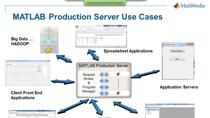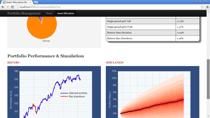Wealth and Asset Management Platform Development with MATLAB Web App Server
Dr. Martin Tarlie, GMO
Nebo Wealth is an award-winning, open architecture asset management platform that represents a leap forward in goals-based investing. Our pioneering approach to asset allocation and portfolio design—built on a big idea that risk is not volatility but “not having what you need, when you need it”—delivers the personalization that clients expect with the scale and efficiency that advisors demand. In this presentation, Dr. Martin Tarlie will motivate the problem, introduce some of the key ideas, and illustrate how GMO has used MATLAB® to create both a web-based application and a scalable API-enabled platform.
Published: 22 Oct 2024




